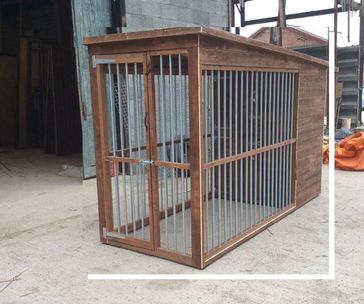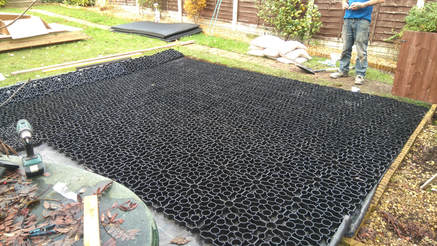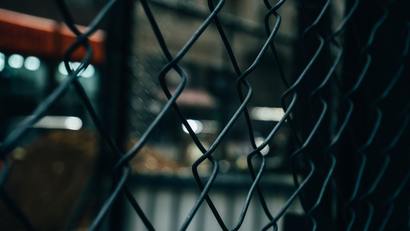Dog Housing Considerations
|
There are a number of things that you should be aware of when planning to buy your dog kennel, dog run, or dog pen which includes: -Size -Foundations -Aspect and location -Length of time the dog will be in it each day -Materials | ||||||
Dog Enclosure - Size

How big is your dog?
How big will your dog grow?
How many dogs would you wish to accommodate?
How big would you like your kennel or run to be?
How much space does your dog/s need?
How much space do you have available?
Large active dogs need more space than smaller dogs, and your dog/s should be able to stand up, lie down and turn around comfortably to provide the utmost basic needs. If you provide too much space in a kennel, you run the risk of wasting your dog’s body heat, or in a dog run - creating a defecating area for the dog.
How big will your dog grow?
How many dogs would you wish to accommodate?
How big would you like your kennel or run to be?
How much space does your dog/s need?
How much space do you have available?
Large active dogs need more space than smaller dogs, and your dog/s should be able to stand up, lie down and turn around comfortably to provide the utmost basic needs. If you provide too much space in a kennel, you run the risk of wasting your dog’s body heat, or in a dog run - creating a defecating area for the dog.
Dog housing doors need to be large enough to accommodate your largest dog’s adult size and there should be enough floor space for multiple dogs to share if needed. Any dog enclosure needs to take into consideration the size appropriate for the dog or dogs that are to be accommodated in it. If you think you will need to expand at any stage, a panel design is probably best.
Dog Enclosure - Foundations
|
Each foundation material for your outdoor dog enclosure has its pros and cons:
-Dirt and grass – great for running and playing on, but can cause the kennel to get muddy after rain and can harbour parasites posing health concerns. -Wooden flooring - provides good drainage and a softer platform than concrete or gravel -Plastic flooring – lightweight and easy to move and arrange, waterproof, easy to clean -Gravel and sand – looks neat, drains well, and inexpensive, but can encourage the dog to dig -Stone – conducts heat and therefore will make ground too hot or too cold, and loose materials will encourage the dog to dig as well as can be sharp and cause injury -Concrete - conducts heat and therefore will make ground too hot or too cold making it uncomfortable for the dog, yet is durable, waterproof, easy to clean |
Dog Enclosure - Aspect & Location
The location of your outdoor dog enclosure is fairly important as being in the direct path of wind, or in the direct sunlight and the elements will not make for good conditions for your pet. Ensure that the dog has access to shade or a kennel and perhaps think about doors or walls to break wind and to prevent drafts.
Dog Enclosure – Length of TimeDepending on whether the kennel and run will intend to be the dogs permanent or temporary enclosure may dictate other areas to consider. For example, where will the dog be when you are cleaning the enclosure? How often will the enclosure need to be cleaned? Do you have enough to entertain the dog to prevent boredom? Have you made the enclosure as comfortable as possible?
|
Dog Enclosure - Materials
As specialists in wooden outdoor dog housing design, you can rest assured that we will use the highest quality woods available for the dog kennel. When it comes to the run and the enclosure, choose between a number of options including metal bars, wire mesh or chain link wire etc. Talk through your dog housing and dog enclosure preferences with our design team today and they will advise on the suitability for your dog.
|



